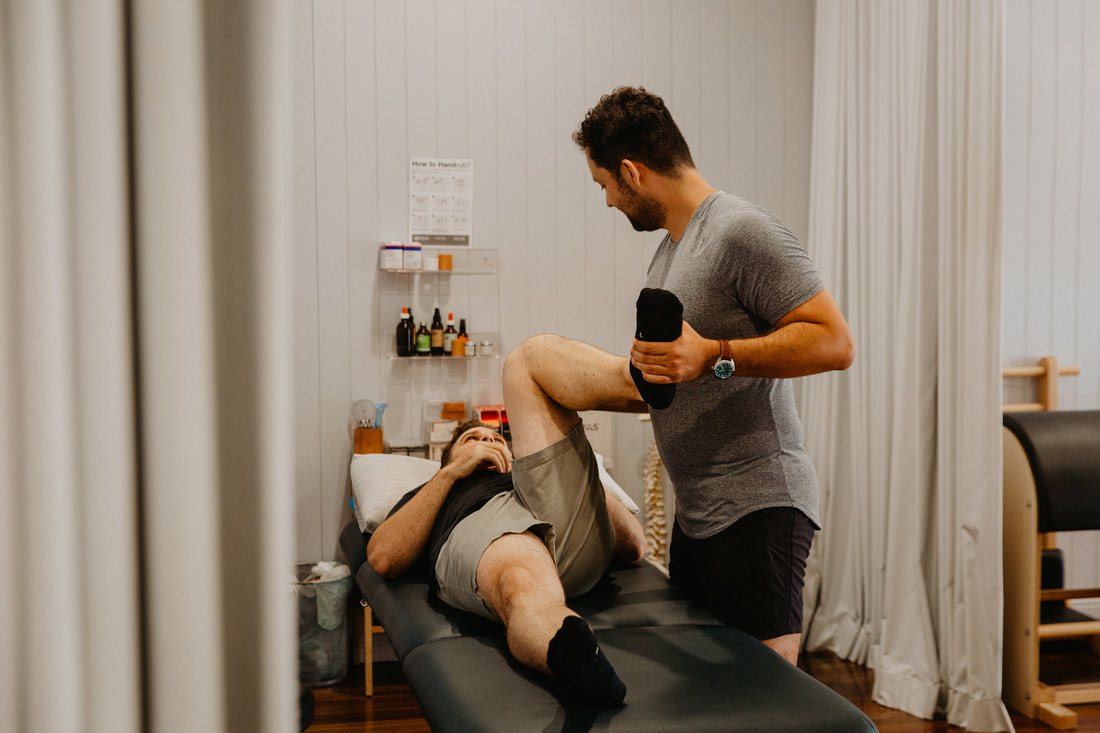Groin strains physiotherapy Brisbane southside.
What are Groin Strains?
Groin strains refer to injuries of the muscles in the inner thigh, particularly the adductor muscle group. These strains typically happen when the muscle is overstretched or experiences a sudden, forceful contraction, often seen in sports that involve rapid acceleration, deceleration, or changes in direction.
What Causes Groin Strains?
Factors that contribute to groin strains include:
How are Groin Strains Diagnosed?
The diagnostic process for groin strains encompasses:
How can Physiotherapy Help with Groin Strains?
Physiotherapy is central to the recovery from groin strains:
How can Clinical Pilates Help with Groin Strain Rehabilitation?
Clinical Pilates offers a tailored approach beneficial for those recovering from a groin strain:
What is the Prognosis for Groin Strains?
The prognosis for groin strains is generally favourable. Most individuals can expect a full recovery, though the duration varies depending on the strain's severity:
How Can I Prevent Future Groin Strains?
Your well-being and mobility matter. Groin strains, while common, should be addressed promptly to ensure a quick and optimal recovery. If you suspect a groin injury or need guidance on prevention, our physiotherapy team is here to assist. Your path to holistic health and confident movement is our utmost priority. We know that untreated strains and sprains are more likely to lead to stiffness, muscle weakness and are more likely to recur. A strain or a sprain that lasts for more than 3 months becomes a chronic condition, and requires much more work to fix down the track!
No matter how big or small our top tip with sprains and strains is to book in quickly and don't let a small problem become a big problem! Call us on 07 3706 3407 or email [email protected] if you want to see one of our Tarragindi and Coorparoo Physiotherapists!
Groin strains refer to injuries of the muscles in the inner thigh, particularly the adductor muscle group. These strains typically happen when the muscle is overstretched or experiences a sudden, forceful contraction, often seen in sports that involve rapid acceleration, deceleration, or changes in direction.
What Causes Groin Strains?
Factors that contribute to groin strains include:
- Sudden Movements: Quick sprints, abrupt stops, or swift changes in direction.
- Direct Trauma: A blow or impact to the groin area.
- Muscle Imbalances: Discrepancies in strength between different muscle groups.
- Overuse: Repetitive strain without adequate recovery.
- Poor Conditioning or Flexibility: Unpreparedness for intense physical activity.
How are Groin Strains Diagnosed?
The diagnostic process for groin strains encompasses:
- Clinical Examination: A physiotherapist will assess pain points, range of motion, strength, and perform specific tests to identify the injured muscle.
- Patient History: Understanding the mechanism of injury, onset, and nature of symptoms.
- Imaging: While not always necessary, ultrasounds or MRIs can help evaluate the extent of the injury, especially in severe cases.
How can Physiotherapy Help with Groin Strains?
Physiotherapy is central to the recovery from groin strains:
- Pain Management: Modalities like ice, heat, or TENS can reduce pain and swelling.
- Manual Therapy: Soft tissue release, joint mobilisations or dry needling can alleviate pain and improve mobility.
- Strengthening and conditioning exercises: Targeted exercises to strengthen and condition the adductor muscles and surrounding hip muscles for the required load.
- Stretching: Ensuring flexibility and lengthening of the muscles to prevent re-injury.
- Education: Guidance on activity modification and gradual return to sports or daily activities.
How can Clinical Pilates Help with Groin Strain Rehabilitation?
Clinical Pilates offers a tailored approach beneficial for those recovering from a groin strain:
- Core Strengthening: A strong core provides better pelvic stability, reducing strain on the groin.
- Focused Flexibility: Targeted exercises to improve the flexibility of the groin and hip region.
- Body Awareness: Understanding movement patterns and recognising harmful postures or techniques.
- Gradual Progression: A safe, phased approach to regain strength without overloading the injured tissue.
What is the Prognosis for Groin Strains?
The prognosis for groin strains is generally favourable. Most individuals can expect a full recovery, though the duration varies depending on the strain's severity:
- Grade I (mild) strains: Recovery within a few days to a couple of weeks.
- Grade II (moderate) strains: Recovery can take several weeks to a few months.
- Grade III (severe) strains: These can take several months and may require a more comprehensive rehabilitation approach.
How Can I Prevent Future Groin Strains?
- Regularly engage in strengthening and flexibility exercises for the hip and thigh region.
- Ensure proper warm-up before physical activity.
- Avoid sudden increases in intensity or duration of exercises.
- Recognise signs of fatigue and allow adequate recovery time between sessions.
- Wear supportive footwear and consider orthotic insoles if needed.
Your well-being and mobility matter. Groin strains, while common, should be addressed promptly to ensure a quick and optimal recovery. If you suspect a groin injury or need guidance on prevention, our physiotherapy team is here to assist. Your path to holistic health and confident movement is our utmost priority. We know that untreated strains and sprains are more likely to lead to stiffness, muscle weakness and are more likely to recur. A strain or a sprain that lasts for more than 3 months becomes a chronic condition, and requires much more work to fix down the track!
No matter how big or small our top tip with sprains and strains is to book in quickly and don't let a small problem become a big problem! Call us on 07 3706 3407 or email [email protected] if you want to see one of our Tarragindi and Coorparoo Physiotherapists!
Who to book in with:
Mauricio Bara
|
Monica Hanna
|
Yulia Khasyanova
|



